Table of Contents
Are you looking for a way to effectively exercise your butt and thighs in the comfort of your home? If so, you’re in the right place. In today’s article, you will find effective bodyweight exercises to help you achieve a round butt and firm thighs. You don’t need to go to the gym or use any fitness equipment. All you need is the motivation to work hard. Both beginners and advanced athletes can incorporate these exercises into their workout, with the option to increase intensity by adding weight, such as using dumbbells or resistance bands.
Among these exercises, you’ll find various squat and lunge variations, as well as some less conventional movements. These will help you target your butt and legs from different angles, engaging muscles comprehensively, including those in the front, back, and inner sides of your thighs. Combined with the right dietary adjustments, these exercises can contribute to enlarging, rounding, and strengthening your butt. Moreover, they also aid in reducing excess fat and toning these specific areas, bringing you one step closer to reaching your fitness goals.
How to Target Your Butt and Legs with Bodyweight Exercises?
Exercising your butt and legs every day or, conversely, having a lower body workout once every two weeks probably won’t be ideal. To make your effort pay off and see visible results, it is important to adhere to a few basic rules.
- From the list below, choose 4–6 exercises and incorporate them into your training plan for a minimum of 4 weeks. Afterwards, you can either replace all or just some of them with different ones as you see fit.
- Complete the butt and thighs workout 2–3 times a week. To allow for sufficient recovery, there should be at least a 48-hour gap between each training session.
- After 2–3 weeks, increase the number of repetitions or sets for each exercise.
- Always focus on proper technique during your workouts.
- When exercising, make sure to move through the full range of motion while maintaining the proper technique. This helps achieve the maximum stretch for the muscle in that position, which is important for its optimal engagement.
- Aiming for those sexy curves often involves gaining muscles and reaching a healthy body fat percentage. A diet with the optimal amount of nutrients and energy, which you can easily calculate using our energy and nutrient intake calculator, can also assist you in achieving this goal. [1–2, 4]
If you want to learn more about a comprehensive butt workout, you can find information in our article: “How to Tone and Shape Your Butt and Legs”
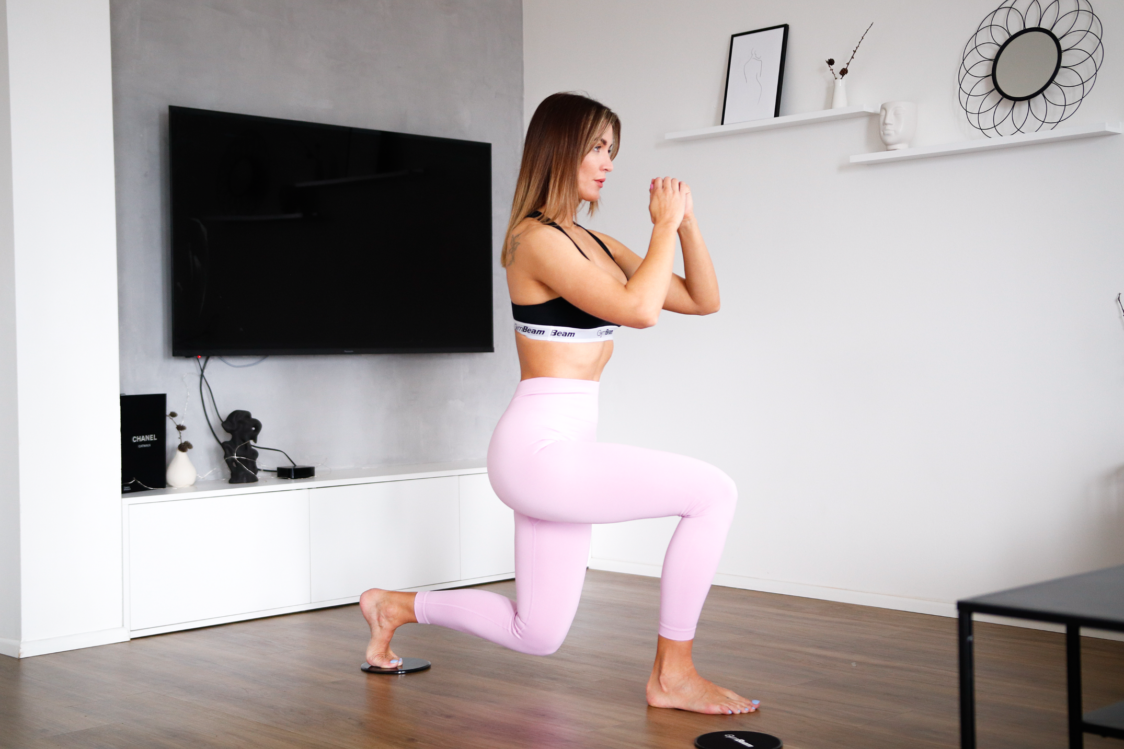
14 Best Bodyweight Leg & Butt Exercises
For each exercise, you’ll find the proper technique for the basic version using your own body weight. If you wish to make your workout more challenging and incorporate added weight, suitable equipment is provided for each exercise. Before diving into your workout, ensure a thorough warm-up, such as jogging in place or skipping rope. Follow it up with dynamic stretching, focusing particularly on the lower part of your body.
You might be interested in these products:
1. Squat
- Starting Position: Stand with your feet slightly apart, approximately shoulder-width. Your weight is evenly distributed across the entire surface of your feet.
- Execution: Inhale and smoothly move your pelvis backward and downward to perform a squat. Pay attention to maintaining proper posture in the back to avoid rounding in the lumbar and thoracic regions of the spine. Control the depth of the squat to preserve the natural curvature of the spine. Ensure that the alignment of the knee, ankle, and toe remains in one plane. Exhale and, through the activation of the gluteal muscles and the front of the thighs, smoothly return to an upright position. Repeat this movement for additional repetitions.
- Common Mistakes: Arching the back, limited range of motion, leaning forward, knees collapsing inward, uneven weight distribution, shifting onto the toes or heels.
- How to Make the Exercise More Challenging With Equipment: Squat with a resistance band above the knees, with an exercise ball overhead, on a half-ball, wearing a weighted vest, using a barbell, kettlebell, medicine ball, or powerbag.
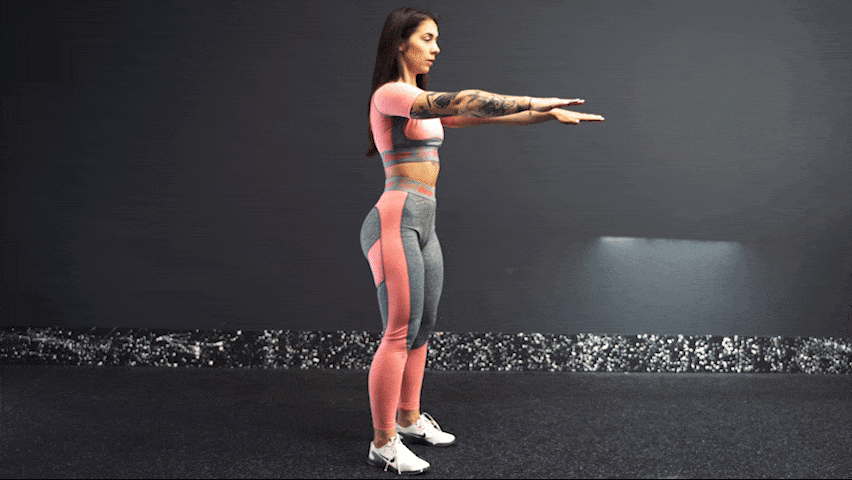
2. Jumping Air Squat
- Starting Position: Stand with your feet slightly apart, approximately shoulder-width. Your weight is evenly distributed across the entire surface of your feet.
- Execution: Inhale and smoothly move your pelvis backward and downward to perform a squat. Control the depth of the squat to maintain the natural curvature of your spine. Ensure that the alignment of the knee, ankle, and toe remains in one plane. Exhale and, through the activation of the gluteal muscles and the front of the thighs, perform a jump. At the top position, inhale, then return to the squat and repeat the jump.
- Common Mistakes: Arching the back, limited range of motion, leaning forward, knees collapsing inward, uneven weight distribution, shifting onto the toes or heels.
- How to Make the Exercise More Challenging With Equipment: Perform a jump air squat with the help of a box, half-ball, or a powerbag.
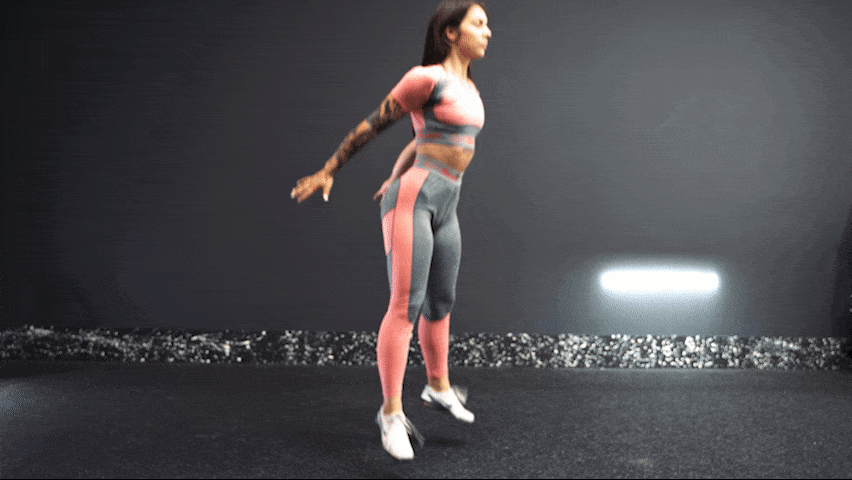
3. In and Out Jump Squat
- Starting Position: Stand with your feet slightly apart, approximately hip-width. Your weight is evenly distributed across the entire surface of your feet.
- Execution: Inhale and jump straight into a squat. Then exhale, perform a jump using the activation of the gluteal and thigh muscles and return to an upright position. Immediately proceed with the next repetition.
- Common Mistakes: Arching the back, limited range of motion, leaning forward, knees collapsing inward, uneven weight distribution, shifting onto the toes or heels.
- How to Make the Exercise More Challenging With Equipment: Perform an in and out squat with a jump onto a stepper or with a powerbag.

4. Squat and Leg Lift
- Starting Position: Stand with your feet slightly apart, approximately shoulder-width. Your weight is evenly distributed across the entire surface of your feet.
- Execution: Inhale and smoothly move your pelvis backward and downward to perform a squat. With an exhalation, straighten up smoothly and lift one leg. Then, bring it back down, squat again, and lift the other leg. Continue with squats, alternating legs.
- Common Mistakes: Arching the back, limited range of motion, leaning forward, knees collapsing inward, uneven weight distribution, shifting onto the toes or heels.
- How to Make the Exercise More Challenging With Equipment: Squat with a resistance band above the knees, with a weighted vest, kettlebell, slam ball, or powerbag.

5. Sumo Squat
- Starting Position: Stand with your feet slightly apart, approximately shoulder-width. Toes pointing outward. Place your hands on your hips or clasp them in front of your chest.
- Execution: Inhale and smoothly move your pelvis backward and downward to perform a squat. With an exhalation, engage the muscles in your buttocks and hamstrings to smoothly straighten up. Then, proceed with the next repetition.
- Common Mistakes: Arching the back, limited range of motion, leaning forward, knees collapsing inward, uneven weight distribution, shifting onto the toes or heels.
- How to Make the Exercise More Challenging With Equipment: Sumo squat with a weighted vest, kettlebell, dumbbell, or powerbag.
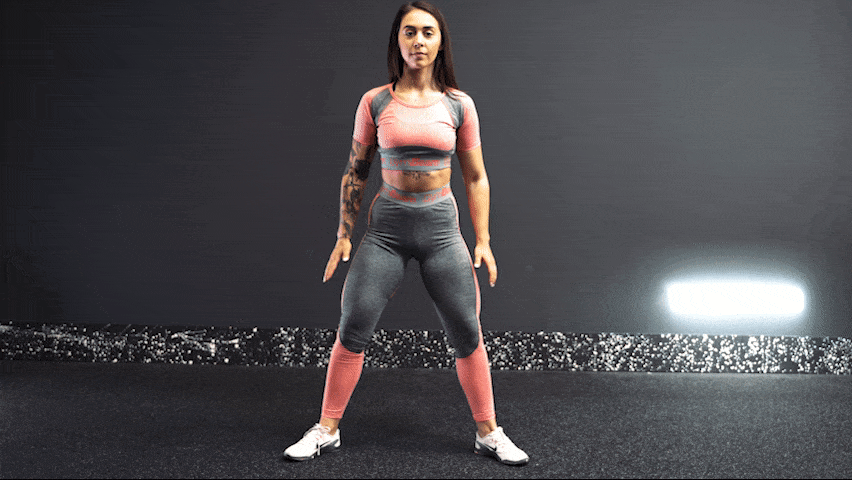
6. Sumo Squat Pulses
- Starting Position: Stand with your feet slightly apart, approximately shoulder-width. Toes pointing outward. Place your hands on your hips or clasp them in front of your chest.
- Execution: Inhale and smoothly move your pelvis backward and downward to perform a squat. Then, breathe naturally and start making small up-and-down movements within a range of a few centimetres in the lower position.
- Common Mistakes: Arching the back, leaning forward, knees collapsing inward, uneven weight distribution, shifting onto the toes or heels.
- How to Make the Exercise More Challenging With Equipment: Sumo squat pulses with a weighted vest, kettlebell, dumbbell, or powerbag.
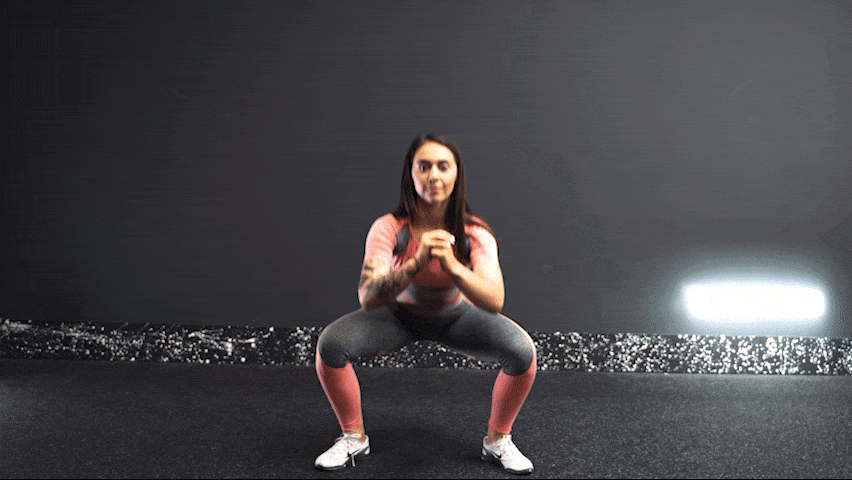
7. Forward Lunges
- Starting Position: Stand with your feet slightly apart and your hands on hips.
- Execution: Keep your toes and knees pointed slightly outward throughout the entire movement. Begin by taking a step forward and slightly to the side. Shift your weight to the front foot. Lower yourself until your thigh is approximately parallel to the ground or deeper, with the knee forming about a 90-degree angle with the calf. Exhale and, with the activation of the muscles in the front of your thighs and buttocks, return to the starting position. Afterwards, immediately proceed with the next repetition using the other leg.
- Common Mistakes: Limited range of motion, poor coordination of movement.
- How to Make the Exercise More Challenging With Equipment: Lunges on a half-ball, with a powerbag, using a barbell, or with a weighted vest.
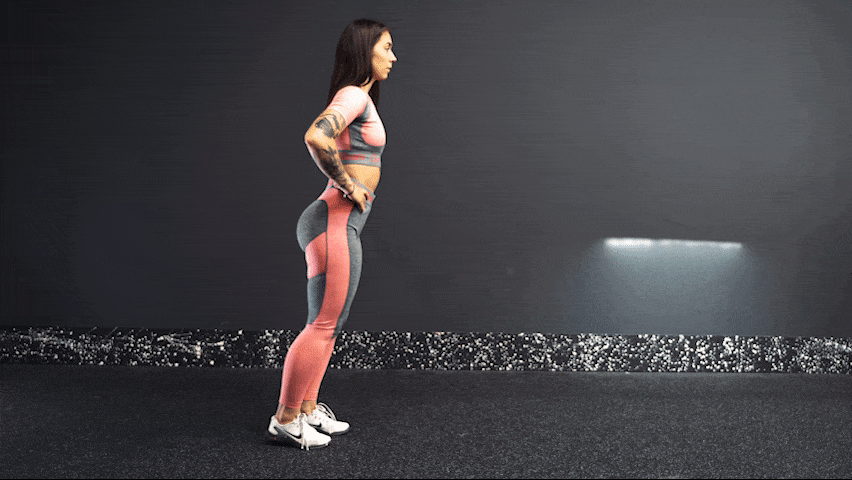
8. Jumping Lunges
- Starting Position: Stand with your feet slightly apart.
- Execution: Keep your toes and knees pointed slightly outward throughout the entire movement. Begin by taking a step forward and slightly to the side. Shift your weight to the front foot. Lower yourself until your thigh is approximately parallel to the ground or deeper, with the knee forming about a 90-degree angle with the calf. The back foot may lightly touch the mat. Exhale and, with the activation of the muscles in the front of your thighs and buttocks, jump up, switching legs in mid-air. Upon landing, inhale, and immediately proceed with the next repetition. Use your hands to maintain stability.
- Common Mistakes: Limited range of motion, poor coordination of movement.
- How to Make the Exercise More Challenging With Equipment: Jumping lunges on a half-ball or with a powerbag, barbell, or a weighted vest.
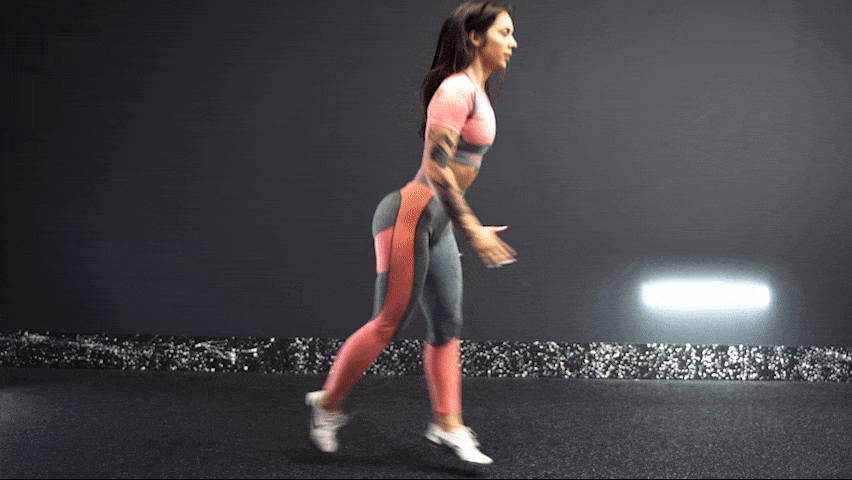
9. Side Lunges
- Starting Position: Stand with your feet slightly apart.
- Execution: Inhale and take a step to the side with one leg, shift your weight onto it, and bend the knee. Lower yourself until your thigh is approximately parallel to the ground or deeper, with the knee forming about a 90-degree angle with the calf. Then, inhale and return to the starting position, performing a lunge to the other side.
- Common Mistakes: Limited range of motion, poor coordination of movement.
- How to Make the Exercise More Challenging With Equipment: Side lunges with a powerbag, barbell, dumbbell, kettlebell, or with a weighted vest. Side lunges in the starting position on a stepper or half-ball.

10. Single-Leg Romanian Deadlift
- Starting Position: Stand with your feet slightly apart.
- Execution: Keep your toes and knees pointed slightly outward throughout the entire movement. Shift your weight to the supporting leg, which is slightly bent at the knee. Inhale, lean forward, and simultaneously extend the other leg backwards, keeping it straight. It’s not necessary for your body to align parallel to the ground in the lower position. Focus on maintaining the natural curvature of your back and feeling the muscles in your buttocks and the back of your thighs. Initially, lifting the leg 30–50 cm above the ground will suffice. Then exhale and return to the starting position. Lifting your arm can help maintain stability. Perform several repetitions on one leg at first and then switch to the other.
- Common Mistakes: Limited range of motion, poor coordination of movement, arching the back.
- How to Make the Exercise More Challenging With Equipment: Single-leg deadlift with a kettlebell in hand, overhead with an exercise ball, on a half-ball, or using a suspension training set.
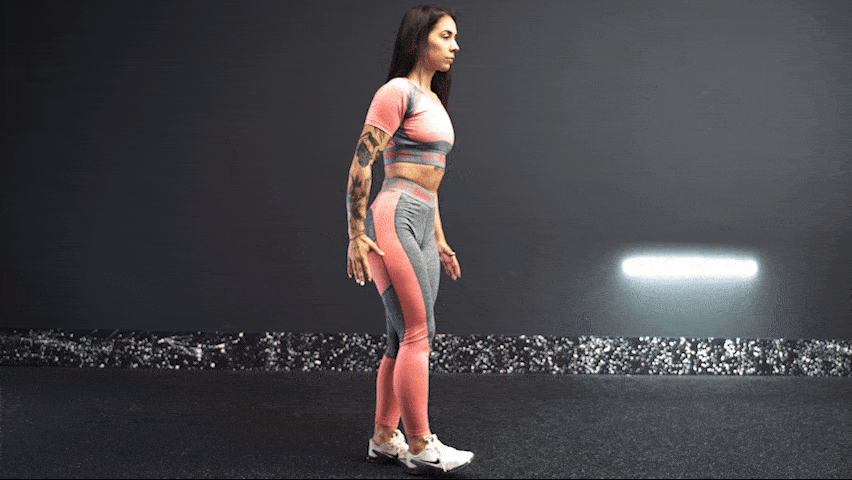
11. Straight Leg Kickback
- Starting Position: Begin by kneeling on all fours and extending one leg straight behind you.
- Execution: Exhale, activate the muscles in your buttocks, and lift the extended leg. Then, inhale and bring it back, proceeding to the next repetition. After completing one set, switch legs.
- Common Mistakes: Arching the back, insufficient activation of the gluteal muscles, limited range of motion.
- How to Make the Exercise More Challenging With Equipment: Straight leg kickback with ankle weights.
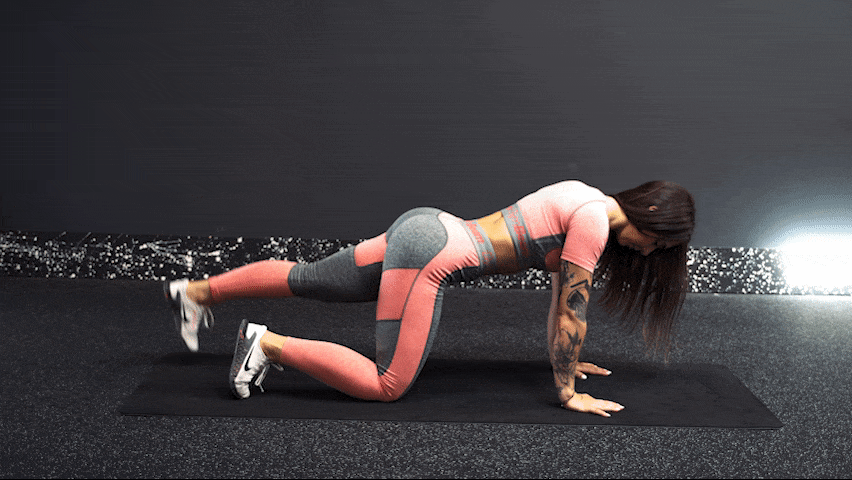
12. Leg Circles
- Starting Position: Lie on your side on a mat with legs extended. Lift your torso off the mat, supporting yourself with your lower arm. The upper arm rests in front of your body.
- Execution: Breathe naturally, lift the upper leg, and start making large circles in one direction. After completing the entire set, roll over to the other side and perform the exercise in the same way.
- Common Mistakes: Limited range of motion, uncontrolled movement.
- How to Make the Exercise More Challenging With Equipment: Leg circles with ankle weights.
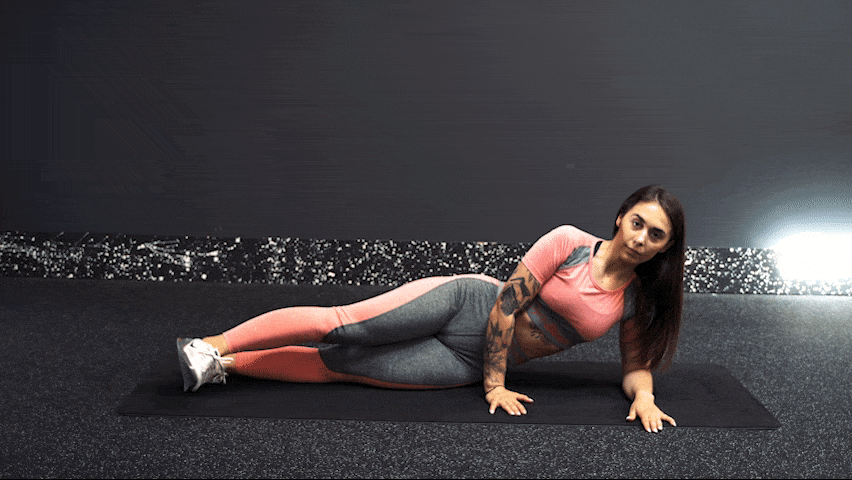
13. Side Plank Leg Lift
- Starting Position: Lie on your side on a mat. Bend the lower leg and keep the upper leg extended. Lift your torso and hips, supporting yourself with your lower arm. Place the upper arm on your hip.
- Execution: Exhale and lift the upper leg to a height where you can maintain a stable position. Inhale and gently lower the leg, lightly touching the floor, then proceed with the next repetition. After completing the entire set, roll over to the other side and perform the exercise in the same way.
- Common Mistakes: Limited range of motion, uncontrolled movement.
- How to Make the Exercise More Challenging With Equipment: Side plank leg lift with ankle weight.

14. Single-Leg Glute Bridge
- Starting Position: Lie on your back with your arms placed alongside your body, palms on the ground. Bend both knees, bringing your heels close to your butt, then lift one leg upward toward the ceiling.
- Execution: Activate the muscles in your buttocks and hamstrings to lift your pelvis upward. Ensure that the raised leg remains in the same position. The movement originates solely from the pelvis. In the top position, focus on contracting the muscles in your buttocks. Hold for a second or two, then lower the pelvis down in a controlled manner. After completing one set, switch legs and perform the same exercise on the other side.
- Common Mistakes: Limited range of motion, insufficient activation of the gluteal muscles, excessive arching of the lower back, uncontrolled movement.
- How to Make the Exercise More Challenging With Equipment: Single-leg glute bridge on a half-ball, with a wide resistance band placed above the knees, or with a kettlebell placed on the pelvis.
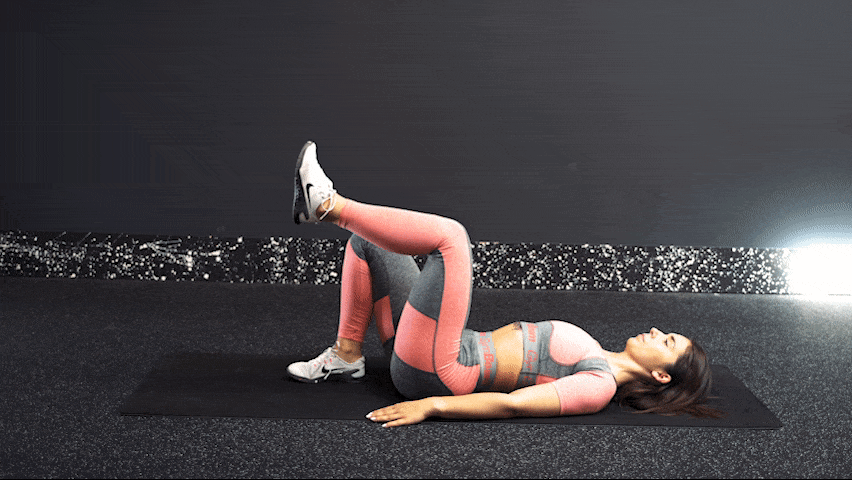
The glute bridge exercise has a lot of variations, with or without equipment. If you’re interested in why you should do it and how to make it more challenging, you can find everything in the article: Glute Bridge: Top 10 Variations for a Firmer and Rounder Butt.
Sample Butt and Leg Workout Without the Use of Equipment
Before your workout, warm up and mobilize your entire body, focusing on releasing your hips and activating the muscles in the lower half of your body. Then, move on to the main part, which includes the exercises from the table. Aim for 3–5 sets of each exercise. You can either complete all sets of one exercise before moving on to the next or cycle through different exercises, creating a circuit training.
Take a 30–90-second break between exercises. After finishing the main part of the workout, add a cool-down phase as needed (slow jogging in place or walking), and consider light stretching. You can incorporate this workout 2–3 times a week.
| Squat and leg lift (alternate legs) | 10–20 |
| Forward lunge | 10–20 |
| Sumo squat | 10–20 |
| Single-leg Romanian deadlift | 10–15 reps per leg |
| Side plank leg lift | 15-20 reps per leg |
| Single-leg glute bridge | 10–15 reps per leg |
How to Go About a Bodyweight Thigh and Leg Workout for Advanced Athletes?
In case you can easily handle 15–20 repetitions without feeling muscle fatigue, you probably need to give your muscles a new stimulus for further growth and strengthening. The following training tips might help you in that regard.
- Gradually reduce the rest period between individual exercises by 10 seconds.
- Incorporate supersets, where you perform 2 or more exercises in a row without a break.
- Combine static exercises with dynamic ones. For example, traditional squats followed by jump squats.
- Add resistance using a resistance band, ankle weights, weighted vests, dumbbells, kettlebell, or a barbell with plates.[3–4]
Are you interested in pushing yourself to the limit during your workout? Then you shouldn’t miss our article: How to Make Your Home Workout More Challenging Even Without Fitness Accessories
Discover our bestsellers:
HIIT Leg and Butt Workout for Advanced Athletes
If you really want to push yourself, try this HIIT. You’ll alternate between longer exercise intervals and short breaks. In addition to effectively strengthening the muscles of the buttocks and thighs, the high intensity will also help you burn a lot of calories in a short period of time.
- 40 seconds of exercise, 20 seconds of rest
- start with exercise number 1, then move on to the exercise number 2, etc.
- rest for 1 to 2 minutes between each set
- aim for 3 to 5 sets in total
- the workout should take you anywhere from 17 to 33 minutes, depending on the number of sets and rest intervals
- Jumping lunges
- Sumo squats
- Side lunges
- Right leg glute bridge
- Left leg glute bridge
Bodyweight Exercises for the Butt
You can also find inspiration for a butt and thigh workout in the video.
Where to Go From Here?
- If you want to focus solely on strengthening and toning your glutes without the use of equipment, you can find effective exercises in the article: How to Work on Your Booty? Best Bodyweight Exercises for Round and Firm Glutes
- If you have a kettlebell at home, you can find lower body exercises using this equipment in the article: 8 Best Booty & Leg Exercises With Kettlebell
- You can create a butt workout with a resistance band using our article: Get a Firm and Round Butt Without a Barbell. Try Resistance Band Workout
- If you’re heading to the gym, try incorporating some exercises from the article: 9 Best Glutes & Legs Exercises
- If you’ve been working hard on your glutes for a while and are unsure if you might be making a mistake, the article “Myths About Glute Exercises That Stand Between You and a Stronger, Rounder and Firmer Butt” can help.
What Are the Main Takeaways?
Bodyweight exercises for legs and glutes are ideal for anyone looking to spice up their lower body workout. The main advantage is that you don’t need any equipment, and you can do them at home, on a workout field, or anywhere else. And when you want to take this workout to a new level, just increase the number of repetitions, sets, or resistance. This way, you can continually progress on your journey to achieving a perfectly toned butt and thighs.
You can try a classic workout with the recommended number of repetitions or a High-Intensity Interval Training (HIIT), which is more suitable for advanced athletes. Everyone who wants to put in the effort will surely find something to their liking.
Did you find this article helpful? If so, feel free to share it with your friends and inspire them to join in on the glutes and legs workout journey.
[1] Muscle & Strength. 8 Week Muscle Building Bodyweight Workout. – https://www.muscleandstrength.com/workouts/8-week-muscle-building-bodyweight-workout
[2] Trinh, E. Can Bodyweight Exercises Build Glutes (Yes, Here’s How) – Fitbod. – https://fitbod.me/blog/can-bodyweight-exercises-build-glutes/
[3] Muscle & Fitness. Build the Ultimate Bodyweight Routine. – https://www.muscleandfitness.com/workouts/workout-routines/build-ultimate-bodyweight-workout-routine/
[4] Duquette, S., & PTS, M. W.-N., BHSc. How to Bulk Up at Home Without Any Equipment. – https://bonytobeastly.com/bodyweight-workout-for-muscle-mass/

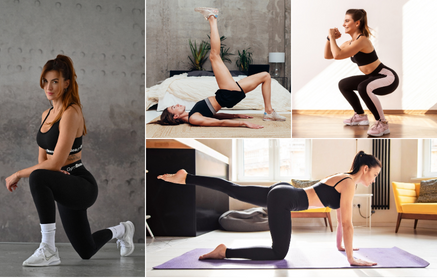
Add a comment